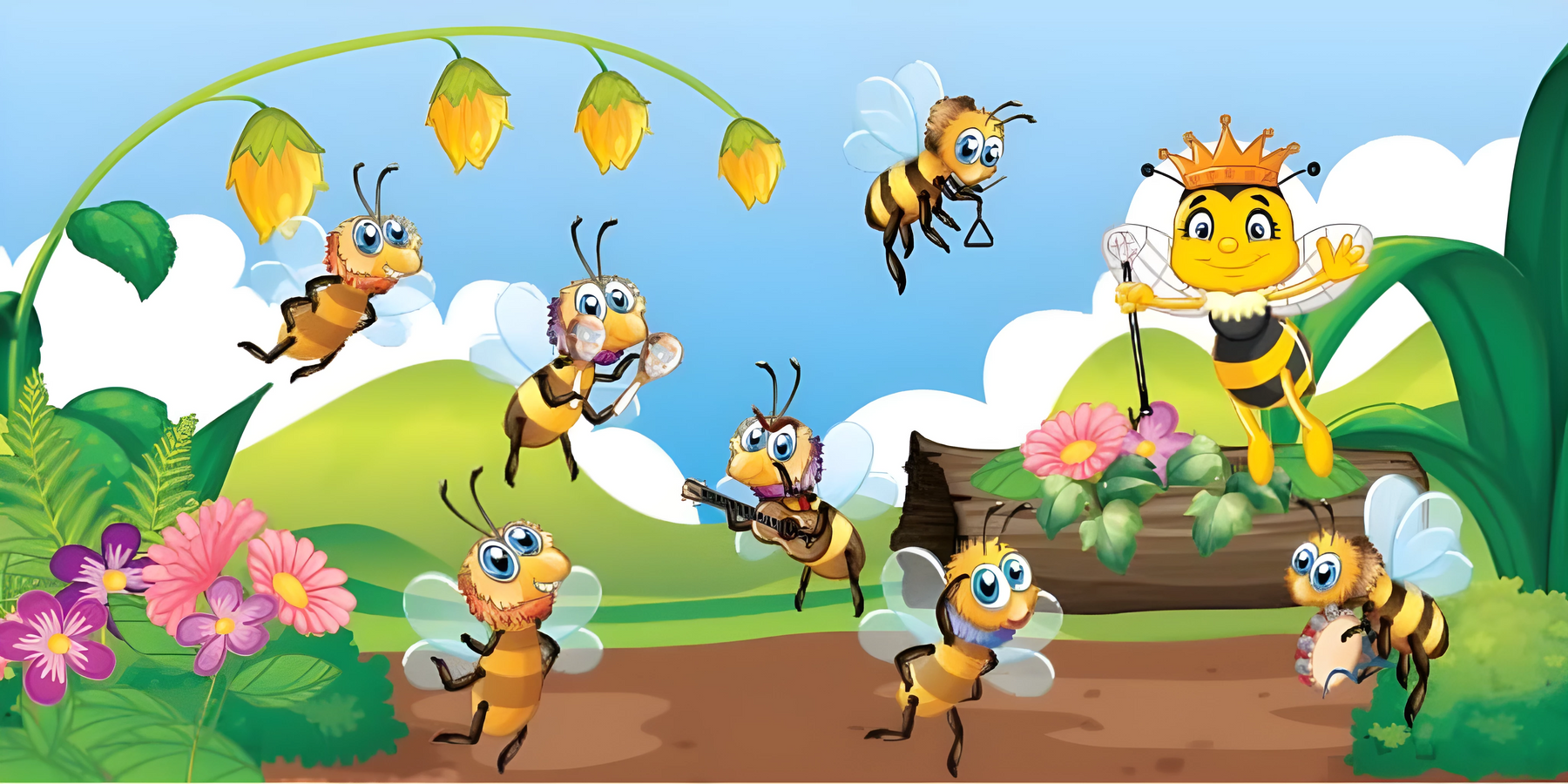
Queen Bee Rearing and Management Techniques
In the enchanting world of beekeeping, the queen bee reigns supreme as the central figure of the colony. Her role as the egg-laying powerhouse determines the colony's strength, productivity, and overall success. As beekeepers, understanding the art of queen bee rearing and management is paramount to maintaining thriving hives and sustainable apiaries. In this blog, we delve deep into the techniques, challenges, and benefits of nurturing these regal leaders of the hive.
The Queen Bee's Royal Influence
Much like the leader of a monarchy, the queen bee holds a position of immense importance. Beyond her ability to lay thousands of eggs daily, she emits pheromones that regulate the hive's behavior and unity. Her genetic makeup also plays a vital role in determining the colony's temperament, disease resistance, and productivity. A well-mated and healthy queen is essential for the long-term prosperity of the hive.
The Intricacies of Queen Bee Rearing
Queen bee rearing is a meticulous process that beekeepers undertake to create new queen bees. This practice ensures a continuous supply of viable queens with desirable genetic traits. Let's break down the steps involved in successful queen bee rearing:
Larvae Selection: The journey begins with the careful selection of larvae. Beekeepers identify and gently transfer young larvae, typically within the first three days of their lives, from regular worker cells to special queen cups.
Royal Diet: Once transferred, these chosen larvae are treated to a royal diet - an abundance of nutrient-rich royal jelly. This superfood is secreted by nurse bees and helps nurture the larvae's transformation into potential queens.
Cell Capping: After around five days of development, worker bees seal the queen cells with wax, marking the start of the pupal stage. This stage is vital for the transformation of larvae into fully developed queens.
Mating Preparation: Once the queen cells are capped, they are moved to mating nuclei or small colonies. These colonies are located away from the main hive to encourage successful mating flights without the risk of inbreeding.
Mastering the Techniques
Grafting: One common method of queen bee rearing involves grafting, where beekeepers manually move selected larvae into queen cups. This hands-on technique requires precision and practice but offers control over the larvae chosen for development.
Swarm Prevention: A well-managed queen bee rearing program can help prevent swarming. By providing the colony with a young and productive queen, adequate space, and resources, beekeepers can minimize the likelihood of swarming.
Queen Introduction: Successfully introducing a new queen to a colony is an art in itself. Techniques such as the "candy cage" method, where the new queen is separated from the worker bees by a sugar plug, help the bees gradually accept their new leader.
Mating Nuc Management: Creating and managing mating nuclei (nucs) is crucial for successful mating. Nucs provide a controlled environment for the young queens to mate, ensuring genetic diversity and strong colonies.
Benefits of Queen Bee Rearing
Customized Genetics: Rearing your own queens empowers you to select for desirable traits such as disease resistance, honey production, and docility. This genetic customization can lead to more resilient and productive colonies.
Cost Efficiency: Purchasing queen bees can be expensive, especially when establishing new colonies. Rearing your own queens can significantly reduce these costs over time.
Colony Growth and Productivity: A constant supply of healthy, well-mated queens ensures continuous egg-laying and rapid colony growth. This translates to increased honey production and overall hive vitality.
Genetic Diversity: The art of queen bee rearing allows you to maintain a diverse genetic pool in your apiary, which is essential for combating diseases and adapting to changing environmental conditions.
Challenges and Future Considerations
While queen bee rearing can be immensely rewarding, it's not without its challenges. Factors such as weather conditions, mite infestations, and mating failures can impact the success of the process. Additionally, ensuring proper nutrition and optimal conditions for the developing queens is crucial for their overall health and performance.
General Questions About Queen Bee Rearing
1. Why is the queen bee so important to a hive?
The queen bee is crucial because she lays thousands of eggs daily, ensuring the colony's growth and productivity. Her pheromones regulate hive behavior and unity, and her genetic traits influence the colony's temperament, disease resistance, and overall success.
2. What are the key steps in rearing a queen bee?
Key steps in queen bee rearing include:
- Larvae Selection: Selecting and transferring young larvae to queen cups.
- Royal Diet: Feeding the larvae nutrient-rich royal jelly.
- Cell Capping: Worker bees seal the queen cells with wax for pupation.
- Mating Preparation: Moving capped cells to mating nuclei for successful mating flights.
3. What is grafting in queen bee rearing?
Grafting involves manually transferring selected larvae into queen cups. This precise technique requires practice and allows beekeepers to control which larvae are developed into queens, ensuring desirable genetic traits.
4. How can rearing your own queens benefit your apiary?
Rearing your own queens offers several benefits:
- Customized Genetics: Selecting traits like disease resistance and honey production.
- Cost Efficiency: Reducing costs by not purchasing queens.
- Colony Growth: Ensuring continuous egg-laying and colony expansion.
- Genetic Diversity: Maintaining a diverse genetic pool for resilience.
5. What challenges might beekeepers face in queen bee rearing?
Challenges include weather conditions, mite infestations, mating failures, and ensuring proper nutrition and optimal conditions for developing queens. These factors can impact the success and health of the reared queens.
In the face of changing environmental dynamics, maintaining the health and genetic diversity of honeybee populations through effective queen bee rearing becomes even more critical. As climate patterns shift and habitats evolve, beekeepers must continue to adapt their techniques and strategies to ensure the survival of these vital pollinators.



Leave a comment